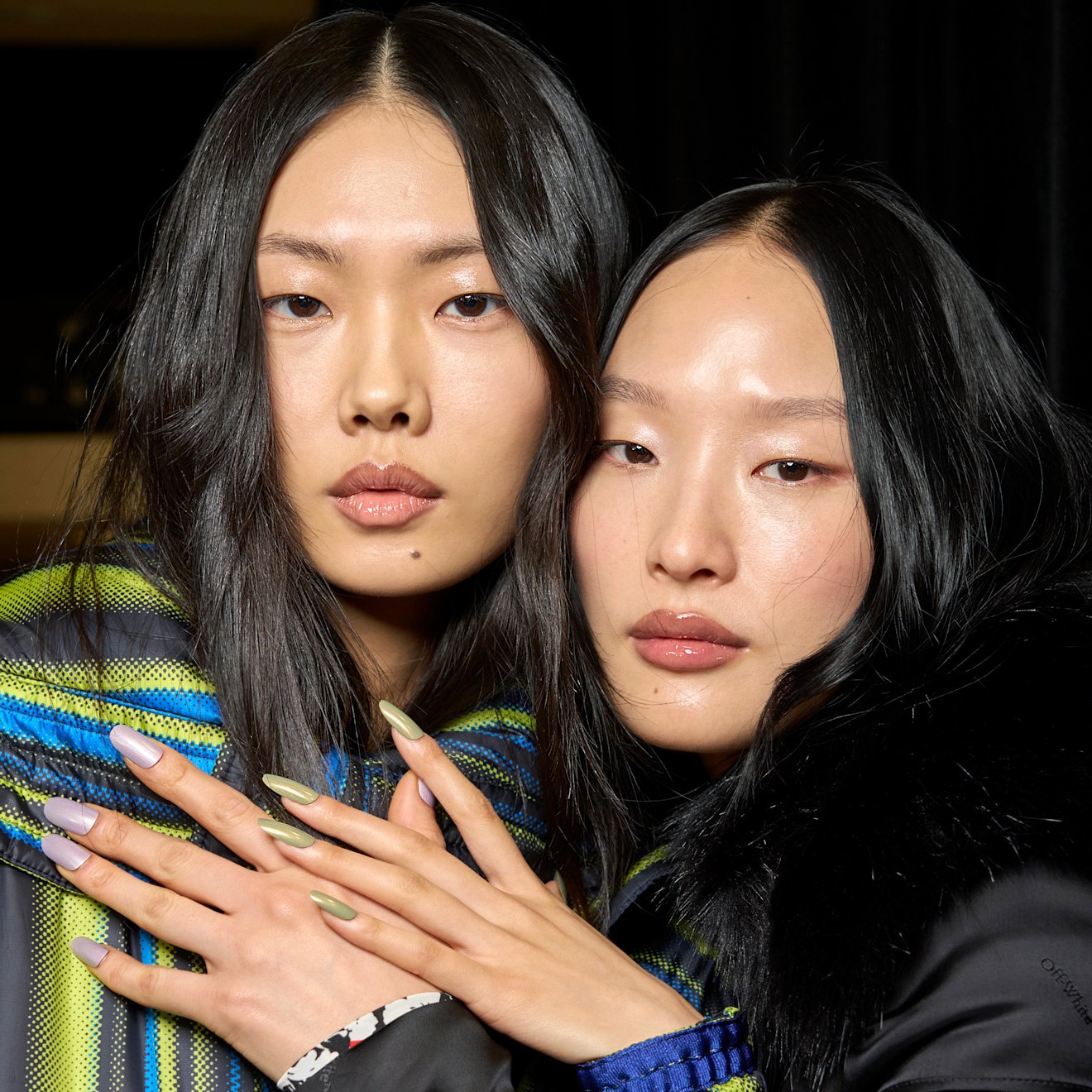
I’m a very proud fake blonde. I’ve been bleaching my hair for the past decade—and according to every stylist who seats me in their chair, my hair remains remarkably healthy. Hence, the unabashed pride. I use hair masks and oils, hydrating shampoos, and engage in the occasional hair growth treatment. But the real game-changer is knowing when to use a hair gloss vs hair glaze so I can wait the longest time possible between color appointments.
Both give my hair a silky texture and mirror-like shine (not to brag, but I’ve been told you can see your own reflection in my hair). The biggest difference between the two products lies in how they work. “A gloss penetrates the hair cuticle to tone and treat, making it ideal for color-treated or textured hair needing long-lasting vibrancy,” explains celebrity hairstylist Sunnie Brook. “A glaze, on the other hand, is a surface treatment, giving you a quick boost of shine without altering your color in a meaningful way.”
Hair glosses and glazes aren’t an either-or situation. Personally, I rotate between both to push off color appointments (yay, less bleach!) and preserve my hair’s health. But they’re not for everyone, and it’s important to know if you’re a candidate and how often to use them. Here, I’m sharing everything Brook, along with hairstylists Temur and Dana Yurick want you to know.
What Is a Hair Gloss?
“A hair gloss is a treatment that tones and adjusts the color and tone of your hair while adding shine,” explains Temur. A hair gloss is typically tinted in color and, in a professional setting, can be cocktailed to bring warmth or coolness to your hair color.
The goal is to help create depth and dimension while adjusting tone where necessary. “Glosses are ideal for color-treated hair because they can refresh faded tones and neutralize brassiness," says Brook. “It works by adding a layer of pigment or clear gloss to the hair cuticle, sealing it to create that reflective, glossy effect.”
There are professional services and the at-home hair glosses (Marie Claire diligently tested the best of the best), but both can deliver a between-appointments refresh. .
My personal favorite hair gloss, this dpHue option is incredibly easy to use at-home. In fact, it's so foolproof, I use it once per month.
"I expected IGK’s Hi-Shine Gloss Treatment to feel like a sticky gel; however, to my surprise, it had a creamy, lightweight texture (sort of like a conditioner)," says Marie Claire Fashion Editor Lauren Tappan.
Oribe has a gloss specifically for curly and wavy hair, with a gloss gel that reviewers say helps define hair while coating softly for crunch-free curls.
"This gloss truly delivers instant shine,” says Associate E-Commerce Editor Brooke Knappenberger. “I use this in the shower when I've gone a particularly long time between haircuts, and it restores my damaged hair."
What Is a Hair Glaze?
A hair glaze is similar to a gloss in that it adds shine, but, according to Brook, it’s a temporary coating that sits on the surface of your hair rather than penetrating the cuticle. “Think of it as a topcoat for your hair—like nail polish for your strands,” she explains. It’s a solid shine-boosting option if you’re not ready to commit to a semi-permanent treatment. It may “slightly” enhance your color, says Temur, but it’s not designed to make a dramatic difference.
Safe for all natural hair shades and color treated hair, this glaze bestows a high-shine finish in just a few minutes.
While this glaze won't deposit color or add dimension, it will leave your hair looking healthy, seal split ends, and smooth frizz.
This lightweight thickening créme will help your hair feel denser and look more voluminous—all while providing a reflective sheen that will last you a few shampoos.
Designed to moisturize and impart shine, this glazing treament, which can be used on all hair types, is fortified with murumuru seed butter and olive leaf extract.
Hair Gloss vs Hair Glaze: What’s the Difference?
Intensity
While both hair glosses and hair glazes add shine and smooth texture, a hair gloss is primarily focused on shifting hair color. Here’s a visual: “Imagine a velvet curtain (the gloss) versus a sheer linen curtain (the glaze). The velvet curtain is richer and denser, blocking more light while adding a luxurious, vibrant tone—just like a gloss deeply saturates the hair strand with color and shine,” explains Brook. "The linen curtain, on the other hand, lets more light through, giving a soft, delicate finish—just like a glaze sits on the surface of the hair, creating a lighter, more temporary effect. Both are gorgeous, but their intensity and depth are different.
Process
Hair glosses and glazes also interact with the hair shaft a bit differently. “A hair gloss involves a chemical reaction that opens the cuticle,” explains Temur. It closes the hair cuticle so light can reflect off of it. It’s not damaging, however he doesn’t recommend it for virgin hair. A glaze just sits on top of the hair cuticle temporarily, washing out after a few shampoos.
Lasting Power
Both a gloss and a glaze take roughly the same amount of time to deposit (think: 20 to 30 minutes), but a glaze fades much faster. A gloss typically lasts four to six weeks, while a gloss lasts roughly one to two.
When Should I Use a Hair Gloss vs a Hair Glaze?
No one knows your hair better than your hairstylist, so it’s best to consult them on whether a gloss or glaze is right for you. “Show pictures and come prepared knowing if you want to go darker or lighter, boost shine, or change your existing color,” explains Yurik.
If you’re deciding which option to choose at home, Brook recommends a gloss as a solution to dullness or faded color. “It’s more transformative and long-lasting,” she says. However, if you just want a quick shine boost before a big event, a glaze is the low-commitment, high-reward solution.
How Often Should I Use a Hair Gloss vs a Hair Glaze?
It really depends on your hair goals, says Yurik. Most stylists will give clients a hair gloss in tandem with their hair color roughly every three months. That said, you can get a hair gloss every four weeks to maintain that “just-left-the-salon shine,” says Brook.
Glazes can be done more frequently. I wouldn’t recommend doing one every time you shower, but you can use it every couple of weeks if you love the finish. My personal technique: alternate between the two. I get glosses with my hair color, and roughly every six to eight weeks. Then, I'll apply at-home glazes in between to prolong the shine.
!["[T]he First and Fifth Amendments Require ICE to Provide Information About the Whereabouts of a Detained Person"](https://images.inkl.com/s3/publisher/cover/212/reason-cover.png?w=600)






